Whether you have vinyl fence scraps left over from the installation or you want to get rid of old or broken vinyl fencing, you’re probably wondering if it can be recycled or if it has to go with general waste. So, is vinyl fencing recyclable?
Is vinyl fencing recyclable?
Vinyl fencing can indeed be recycled as it’s made of plastic. It can be recycled in most recycling centers or better still with vinyl fence manufacturers. They can recycle your vinyl fence scraps and make new ones and thus helping the environment.
Recycled vinyl is used in so many new applications, so it’s vital for everyone to recycle their vinyl fencing scraps, damaged panels, or unwanted ones.
The recycling process of polyvinyl chloride
Companies recycle vinyl all the time, not only to make new fencing but also pipes, doors, windows, bottles, electrical cable insulation, music records, imitation leather, flooring, signage, and much more. As it’s used in so many new applications, it’s important to recycle vinyl fencing scraps, damaged panels, or unwanted ones.
The recycling process of polyvinyl chloride waste has five steps:
- Pre-treatment (cleaning, grinding, mixing)
- Dissolution (dissolving PVC)
- Filtration (further removing of impurities)
- Precipitation (separation)
- Drying
What are vinyl fences made of?
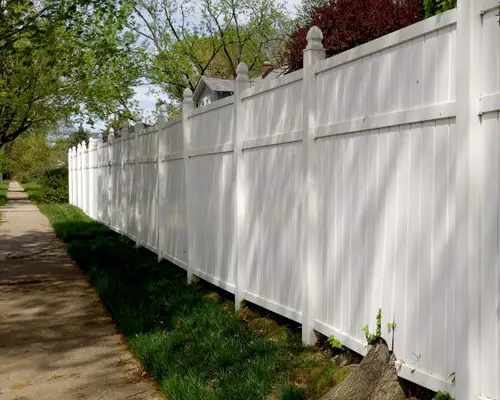
Vinyl fences are made of PVC (polyvinyl chloride), a durable material that can be rigid or flexible. Most of the world’s PVC production is in China, but the largest single PVC producer in the world is Shin-Etsu Chemical from Japan.
PVC or vinyl is basically plastic and we know plastic can be recycled. But what is PVC itself made of? It’s made of fossil fuels as well as natural gas and the process also includes sodium chloride.
Recycled PVC, including vinyl fencing, is broken down into small chips that are used to make pure PVC to continue the cycle. Vinyl fencing can basically be recycled up to seven times before it uses its characteristics and has a lifespan of 140 years.
In Europe, 771,313 tonnes of PVC were recycled in 2019 and 731,461 in 2020.
Why are vinyl fences mostly white?
As you might have noticed, most vinyl fences out there are white. That’s because the PVC material that they’re made of, is originally white, and therefore, the most cost-effective option is to just install them as is – white.
The white color can be very difficult to see during winter when there’s a lot of snow or even in strong sunshine. Both situations can be dangerous for livestock and especially galloping horses.
There are other colors of vinyl fencing available on the market. It’s not all white. There are many colors and textures widely available such as realistic wood grain colorations (driftwood, walnut…), and standard colors like sand, clay, gray, etc.
Colored vinyl won’t fade and is easy to maintain. It can also easily make your fence stand out in the sea of white fences.
Can you paint vinyl fencing?
You can paint vinyl fencing but most paint simply won’t stick to it. Fencing’s non-porous PVC body is what makes it so good and so widely used around the world. It’s also why it’s not good for painting.
The smooth surface doesn’t work well with oil-based or latex paints so epoxy-based paint is your best bet. Prepping the fence and actually doing the painting is not easy, especially if you have a lot of it.
You can always buy colored vinyl fencing instead, although it is typically more expensive.
How long do vinyl fences last?
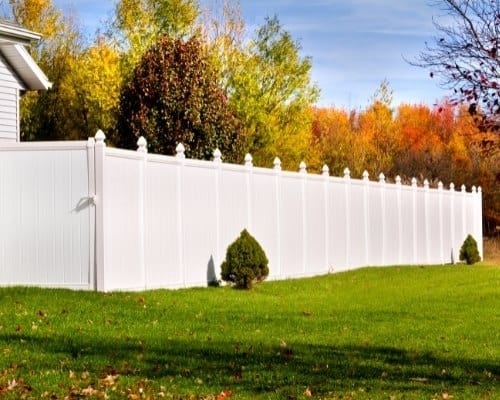
Vinyl fences can last for many decades and outlast wood fencing by 100%. Your typical vinyl fence could easily last between 20 and 30 plus years with minimal maintenance. And although there’s a larger investment needed upfront than, let’s say wood, it is more worth it in the long run.
Vinyl fences are a popular choice exactly because they need less upkeep than wood, don’t need to be replaced in decades, and are strong. Some manufacturers even give a 30-year guarantee on their vinyl fencing, which speaks volumes.
Why are vinyl fences so durable?
Vinyl fences are made of plastic, but that’s no ordinary plastic. The fencing manufacturing process includes the addition of titanium dioxide, impact-resisting polymers, UV inhibitors, and others that ensure vinyl fences remain durable, resist impact, and prevent color fading for many decades to come.
What can I do with my old vinyl fence?
If you have an old vinyl fence that you don’t want or need anymore, the two best choices would be to sell it to someone who needs it or to recycle it at your local recycling center or directly with a PVC manufacturer.
Is vinyl fencing biodegradable?
Although vinyl fencing isn’t biodegradable, it is recyclable up to seven times. This makes vinyl (PVC) a very “green” material when used as fencing and recycled after its 20+ years of life are over.
Wood, on the other hand, is biodegradable and that’s why it has to be replaced much sooner than vinyl, even when properly maintained.
Are vinyl fences toxic?
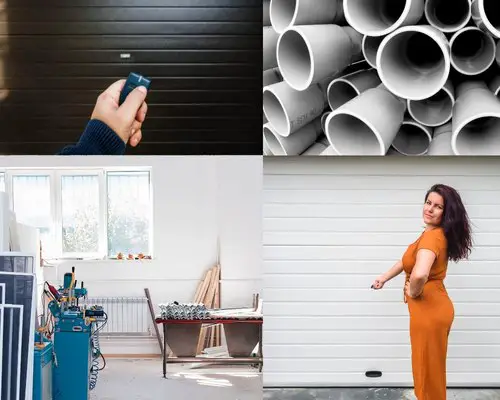
As I already mentioned, vinyl fences are made of PVC, a durable plastic that is all around us in numerous products that are used without any issues. Vinyl fencing is used outdoors and shouldn’t have a negative impact on people, plants, or animals.
The toxic chemicals that PVC fences contain aren’t emitted in normal conditions and are only released when burning, ie. when on fire.
Do vinyl fences break easily?
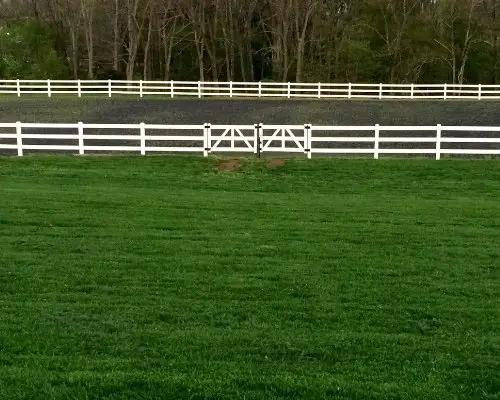
Vinyl fences don’t break easily and can sustain at least as much impact damage as wood fencing. PVC is a very resistant and sturdy material that can take a lot of damage. If a panel does get damaged, it’s easily replaceable and the damaged part can be recycled so there’s no impact on the environment.
Which is more expensive vinyl or wood fencing?
You might have noticed that vinyl fencing is compared to wood fencing all the time. They are also compared in terms of price. And, although it’s true that vinyl fencing is more expensive than wood, it’s cheaper in the long run as it requires less maintenance and needs to be replaced only every 20 to even 30 years.
Why is vinyl fencing so expensive?

The vinyl fencing manufacturing process is a complex operation that involves either mono-extrusion or co-extrusion. PVC is combined with expensive ingredients that will make it sturdy, long-lasting, and resistant to multiple types of climates and the sun’s ultraviolet rays.
People looking to install a new fence often get a “sticker shock” when they see the price of vinyl fencing go into two figures.
Oftentimes, people have a made-up sum in their heads of how much fencing should cost. Their figure isn’t based on reality and anything higher than that will be a shock to them.
What is virgin vinyl fencing?
Virgin vinyl fencing is made of a hundred percent vinyl and doesn’t contain any recycled vinyl but only pristine vinyl that comes straight from the production facility. So, is there a difference between virgin and ordinary vinyl fencing? No. Not at all. Both fences are durable, and sturdy, and will last for generations to come.
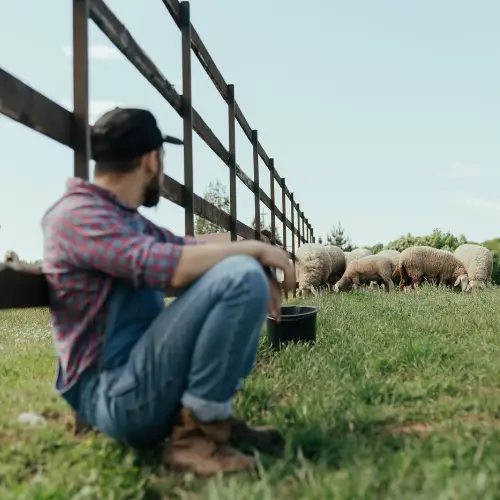
Jack is the owner, chief editor, and senior writer of this website.
Machinery, engines, and farming have always been a passion of his since he was a young boy. Growing up on a small farm in rural America, he learned the value of hard work and dedication from an early age.
After completing his degree in Engineering, he decided to follow his dream and became a farmer in 2009.
Since then, he has gained a wealth of knowledge and experience in the field. He has grown a variety of crops, tended to farm animals, and worked with all sorts of farming machinery. Continue reading…

